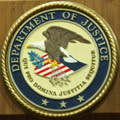CME faces scrutiny over warning signs on ‘flash crash trader’

Roula Khalaf, Editor of the FT, selects her favourite stories in this weekly newsletter.
As far back as 2009, CME Group identified a high volume of cancelled orders by the UK trader charged this week with contributing to the 2010 “flash crash”. Now the operator of the largest US futures market is under scrutiny for letting his conduct continue into 2014.
A criminal complaint unsealed this week offered limited details of CME’s communication with Navinder Singh Sarao, the UK citizen accused of manipulating the S&P 500 futures contract known as the E-mini, and his broker.
Authorities allege Mr Sarao, who is fighting extradition to the US after his arrest, made $40m in profits from the illegal trading, sending out orders that were quickly cancelled to benefit other trading positions. This “spoofing” continued from June 2009 until April 2014, authorities say.
CME sent a warning to Mr Sarao on May 6 2010, the day of the sudden plunge in US shares, saying that all pre-opening orders were “expected to be entered in good faith for the purpose of executing bona fide transaction”. CME had twice before raised concerns about the high volume of his cancelled orders.
Mr Sarao emailed his broker two weeks later, on May 25, stating he had “just called” CME and “told ’em to kiss my ass”, according to the complaint.
How Mr Sarao was allowed to continue trading despite raising red flags at CME has drawn criticism about its oversight.
Self-regulatory organisations such as CME have dual roles. They profit from the volume of trading on their exchanges, but are also tasked with ensuring that traders abide by the rules.
“It’s very, very difficult when you’re looking at that massive volume of data to catch someone where there is no indication of anything unusual or untoward. But that’s not the case with this guy. It’s flashing red lights around this guy,” said Dennis Kelleher, chief executive of Better Markets, a non-profit group that promotes the public interest in financial markets.
“What I do think is critically important is how he was not shut down years ago by the SRO responsible for surveillance,” said David Lauer, president of Kor Group, a market structure consultancy. “Someone should be watching the futures markets who is incentivised to police them.”
CME on Wednesday declined to comment on Mr Sarao’s trading but said “the flash crash was not caused by the futures market”. It added that it looked forward to reviewing any new information with the Commodity Futures Trading Commission, the lead US derivatives regulator.
When CME expressly banned spoofing last year, it noted that it had been cracking down on cancelled orders since 2002 using a previous regulation, Rule 432, which encompassed the practice without naming it.
In the previous three years, it said, CME exchanges had brought more than 40 disciplinary actions under Rule 432 for “spoofing, misleading, or intentionally/recklessly disruptive” trading.
Still, some traders complain, CME tends to impose small fines for minor infractions while ignoring patterns such as Mr Sarao’s cancelled orders, which CME does not appear to have referred to the CFTC. People familiar with the investigation say the CFTC did not begin investigating Mr Sarao until at least late 2013, possibly later.
The lawyer representing a whistleblower said his client had given hundreds of hours of analysis on the trades to the CFTC, which, he said, kicked the investigation into high gear. He declined to say when the referral was made but said the CFTC referred the matter to the Department of Justice months later.
The CFTC had no immediate comment.
The conflict of interest at SROs has long been in focus. The NYSE was criticised for not aggressively policing specialist firms trading stocks on its floor a decade ago. Recently the Securities and Exchange Commission has fined several exchange operators for failing to enforce their own rules.
CME has faced particular scrutiny since the flash crash. It was questioned over its oversight of MF Global, the futures commission merchant that filed for bankruptcy in 2011. It is also opposing a transaction tax on the industry, saying it could drive traders to other markets.
But this latest case underscores the questions over how seriously it takes its regulatory role. Mr Sarao appeared on CME surveillance teams’ screens in at least March 2009. Then, the CME contacted him about orders he had cancelled before the markets opened, according to the criminal complaint. CME alerted his broker a year later with similar concerns.
CME told the broker Mr Sarao “just had 1613 ‘This order is not in the book’ reject messages in the last 5 minutes”, according to the complaint. The broker forwarded the email to Mr Sarao stating the conduct was “not allowed”.
Mr Sarao emailed his broker and the CME on March 31 2010 saying he wanted to “apologise for any inconvenience” and that he was “showing a friend of mine what occurs on the bid side of the market”.
According to Better Markets’ Mr Kelleher, CME should have demanded a more satisfactory explanation. “It seems they think their duty begins and ends with sending a letter.”



Comments